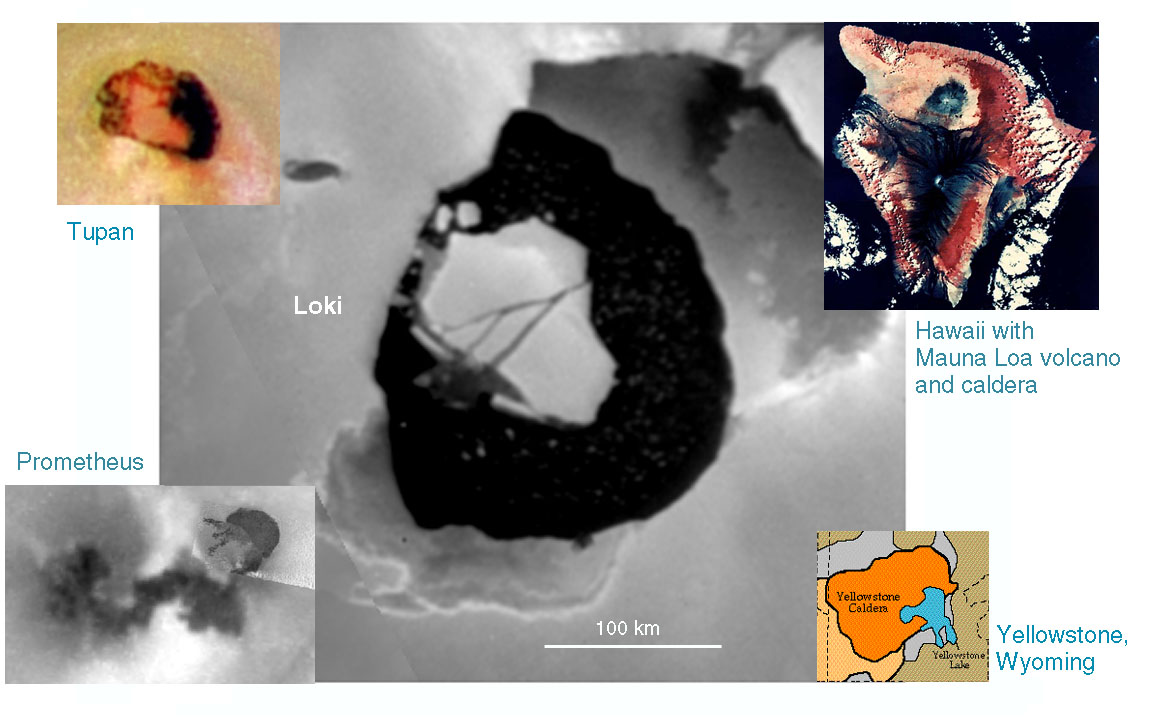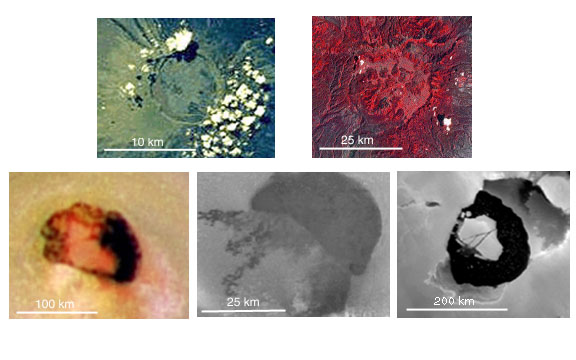

The picture above shows calderas of Io together with two familiar calderas of Earth, all to the same scale. Giant Loki Caldera dwarfs all other calderas shown, especially the 8 km diameter caldera on the shield volcano Mauna Loa. Though Mauna Loa is the largest volcano by volume on Earth, the portion above sea level would still probably fit entirely within Loki Caldera. Yellowstone Caldera is the largest known caldera on Earth, at 70 km diameter, although the last time it erupted, spewing 1000 cubic kilometers of ash into the sky, was 0.6 million years ago. The sinuous lava flows of Prometheus Caldera wind for about a hundred kilometers, but the caldera is rather diminutive, at 30 km diameter, in comparison with Loki Caldera. The only suitable contender for size in this group is Tupan Caldera, coming in at about half the diameter of the 200 km diameter Loki Caldera, and displaying brilliant red streaks and dark spots across its caldera floor.
The picture below shows two terrestrial (top) and three Ionian (bottom) calderas. The terrestrial calderas are Isabela in the Galapagos and Valles in New Mexico, U.S. (from left to right). The Ionian calderas are Tupan, Prometheus and Loki (from left to right).

Image produced by: Jani Radebaugh, Planetary Image Research Lab. (PIRL), Lunar and Planetary Lab. (LPL), University of Arizona
November 22, 1999